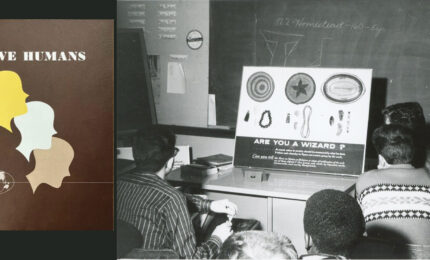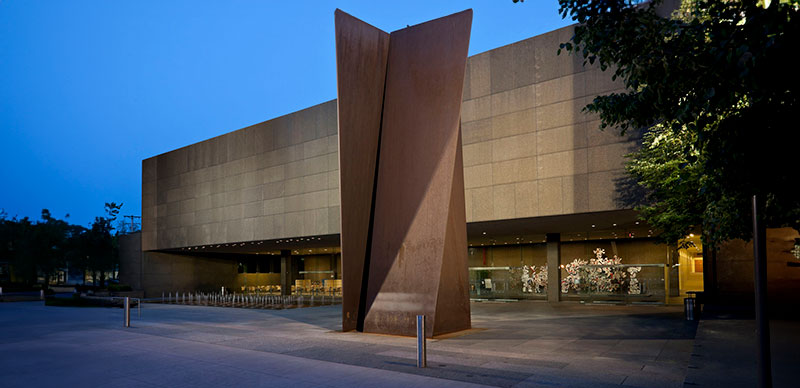As a kid growing up in Northern Ireland, Paul Duprex borrowed science books from his rural town’s library, which happened to be a Carnegie Library on Carnegie Street, part of Pittsburgh industrialist Andrew Carnegie’s global legacy.
Fast-forward a few decades, and Duprex is a molecular virologist and director of the University of Pittsburgh’s acclaimed Center for Vaccine Research, which is partnering with Carnegie’s namesake museums in Pittsburgh. It’s a full-circle journey for the boy who spent his early years exploring the natural world and building with LEGO® sets—and then grew up to realize that, in molecular biology, scientists can “join up DNA the way I used to join up LEGO bricks.”
That ability to synthesize complicated scientific topics, like DNA, into understandable visual models sets Duprex apart, not only as an expert in the sciences but also as an expert science communicator—a crucial skill amid the COVID-19 pandemic. His Pitt team has been working collaboratively with scientists around the world to unlock the secrets of COVID-19 and find ways to defeat it, earning them national media coverage, a feature on “60 Minutes,” support from major foundations, and visits by Secretary of State Antony Blinken and U.S. Senator Bob Casey. In recognition of his acclaimed work, Duprex was awarded the Chairman’s Award for excellence at the 2021 Carnegie Science Awards.
Over the past year, Duprex and his colleagues have been working with Carnegie Science Center to deliver important scientific messages to kids and adults across the region through free SARS Saturday … Chasing COVID events at all four Carnegie Museums. Programs feature the Science Center’s special brand of hands-on activities, accompanied by scientists from Duprex’s team who are eager to answer visitors’ questions.
“There’s an imperative on us as scientists to communicate.”
-Paul Duprex, director of the University of Pittsburgh Center for Vaccine Research
Duprex raves about one activity where kids use balloon “swords” to fight a massive helium balloon “virus,” recounting how he witnessed kids valiantly whacking the balloon virus with their swords. “A balloon sword is a really good way to fight a balloon virus,” he remembers telling the kids. “But if you want to fight a real virus, what do you use? Not a balloon sword. You use the best intervention that we have, which is vaccines.”
It’s a down-to-earth but powerful approach to talking about antibodies, vaccines, and fighting viruses. Other SARS Saturday activities include making spike proteins out of balloons, exploring 3D-printed models of the COVID-19 virus, analyzing herd immunity through a checkerboard, looking at scientists’ lab gear, and watching “Chasing COVID,” a film that takes viewers inside Duprex’s lab.
The scientists’ engaging personalities and understandable language “makes it digestible,” says Justin Tognarine, the Science Center’s director of team and community engagement.
“They joke and they talk and they connect with people, but they also share that people have concerns and that’s why they’re coming to participate, so they try to put them at ease,” Tognarine says, lauding Duprex as personable, gregarious, and “just like a firecracker.”
Duprex is especially proud of the diversity of his team. It’s important, he notes, for people to see scientists of different genders and backgrounds.
“This young girl at our SARS Saturday event watched our ‘Chasing COVID’ movie and saw scientists in front of her—female scientists. For her to say, ‘I would like to be a scientist’ … who knows where that will go. She could be the person who sorts out Alzheimer’s. She could be the person who makes a major contribution to cancer. She could be the person who works out the next vaccine for the next infectious disease.”
Duprex has worked with respiratory viruses for his entire career. So, when COVID-19 surfaced, he knew his team could contribute—to both the research and the dialogue. “It’s very important that if you have been given resources that you play your part,” he says.
“There’s an imperative on us as scientists to communicate. We have a science center in Pittsburgh. I can talk to national newspapers, international newspapers, but my first line of responsibility is my community in Pittsburgh.”
The Carnegie Science Center team will soon be taking their vaccine-awareness activities on the road, thanks to a $50,000 Communities for Immunity grant from the Association of Science and Technology Centers in partnership with the American Alliance of Museums and the Network of the National Library of Medicine. Through a collaboration with Giant Eagle, they’ll be packing up a 28-foot trailer with hands-on activities and visiting Giant Eagle grocery stores across the region, focusing on areas with low vaccination rates. Interested visitors can even get vaccinated on-site. Another future initiative will bring the Science Center’s vaccine-awareness activities, along with a Giant Eagle mobile produce market, to local areas that are considered food deserts—places with low access to fresh foods.
“For us, it’s just about educating and providing facts,” says Tognarine. “There’s a lot of misinformation out there and a lack of education about COVID in general, as well as the vaccine. I hope at least for one person it makes a difference.”
For Duprex, personalizing science in whatever ways possible, especially for children, is a calling.
“I want to be the person who might inspire them,” he says, “like my teachers inspired me.”







